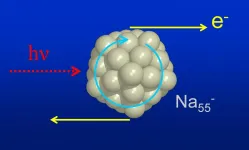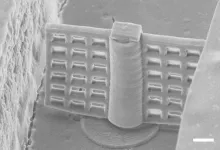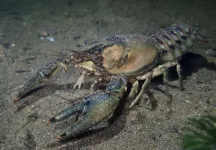Drug rebates for insurers tied to higher costs for patients, especially the uninsured
2021-06-15
(Press-News.org) Federal agencies that regulate drug pricing and healthcare insurance are concerned that an industry practice of using rebates to lower drug costs for insurers has led to increases in list prices and out-of-pockets costs for patients.
To investigate whether patients with or without insurance were paying more because of rebates to insurers, researchers led by the University of Washington examined cost and price data on more than 400 branded drugs. The study found that rebates were associated with increases in out-of-pocket costs for patients by an average of $6 for those with commercial insurance, $13 for Medicare patients and $39 for the uninsured.
"We know that list prices have been increasing quite dramatically as have rebates, but no one has looked into the association between rebates and out-of-pocket costs," said study lead author Kai Yeung, an affiliate assistant professor at the CHOICE Institute in the UW School of Pharmacy. "Increases in out-of-pocket costs are associated with rebates, however rebates also help keep premium costs down."
Consequently, said Yeung, who is also an assistant professor at Kaiser Permanente Bernard J. Tyson School of Medicine, "There has been inadequate focus on the impact the pricing mechanism has on the uninsured, who are most affected."
For the study published June 14 in JAMA, the researchers used data on 444 branded drugs without generic equivalents from national datasets involving healthcare costs and drug prices from 2007 to 2018 including the federal Medical Expenditure Panel Survey and SSR Health, a private company that collects and analyzes prescription drug pricing data.
Researchers point out that the cost increases can impact patient health, since higher costs can cause patients to take their medication less often. That, in turn, can lead to increased emergency room use and hospitalizations. People in their study who did not have insurance had the poorest health and those with lower incomes were less likely to take medication as prescribed when costs increased.
"Further," the researchers wrote, "uninsured individuals were more likely to be in racial minority groups, amplifying pre-existing disparities in healthcare access."
As a result, the authors suggest future research and policies should focus on decoupling list prices from what patients pay out of pocket, "especially for uninsured individuals."
"The biggest takeaway is understanding that the rebates work to reduce the cost of prescription drugs for insurance companies and may reduce premiums," said co-author Anirban Basu, the Stergachis Family endowed director of the CHOICE Institute and professor of health economics at the UW School of Pharmacy. "And while it's unclear how much the discounts are reducing premiums, they are definitely not translating to lower out-of-pocket costs for the patients who are using the treatment because of this structure of coinsurance and copayments tied to the list price."
Stacie Dusetzina, Vanderbilt University School of Medicine, Nashville, Tenn., is also a co-author. This research was supported in part by grant funding from the Donaghue Foundation's Greater Value Portfolio.
INFORMATION:
For more information, contact Yeung at Kai.Yeung@kp.org and Basu at basua@uw.edu.
ELSE PRESS RELEASES FROM THIS DATE:
2021-06-15
In 1943, two scientists named Max Delbrück and Salvador Luria conducted an experiment to show that bacteria can mutate randomly, independent of external stimulus, such as an antibiotic that threatens a bacterial cells' survival. Today the Luria-Delbrück experiment is widely used in laboratories for a different purpose--scientists use this classic experiment to determine microbial mutation rates. When performing the Luria-Delbrück experiment, scientists need efficient computer algorithms to extract reliable estimates of mutation rates from data, and they also need well-designed software tools to access these sophisticated algorithms.
Through the years, several web tools that allow researchers to more easily input and analyze data on a computer were developed to increase ...
2021-06-15
Photoemission is a property of metals and other materials that emit electrons when struck by light. Electron emission after light absorption was already explained by Albert Einstein. But since this effect is a highly complex process, scientists have still not been able to fully elucidate its details. Prof. Dr. Bernd von Issendorff and his team at the University of Freiburg's Institute of Physics have now succeeded in detecting a previously unknown quantum effect in the angular distributions of photoelectrons from cryogenic mass-selected metal clusters. ...
2021-06-15
Washington, D.C. - June 15, 2021 - Viral genome sequencing of wastewater can provide an early warning system of emerging SARS-CoV-2 variants that is independent of investigations of identified clinical cases, according to a new study published in mSystems, an open-access journal of the American Society for Microbiology. In the study, researchers describe the detection and quantification of variant B.1.1.7, first identified in southeast England, in sewage samples from London, United Kingdom before widespread transmission of this variant was obvious from clinical cases.
"Wastewater sampling and environmental surveillance ...
2021-06-15
Humans can do lots of things that plants can't do. We can walk around, we can talk, we can hear and see and touch. But plants have one major advantage over humans: They can make energy directly from the sun.
That process of turning sunlight directly into usable energy - called photosynthesis - may soon be a feat humans are able to mimic to harness the sun's energy for clean, storable, efficient fuel. If so, it could open a whole new frontier of clean energy. Enough energy hits the earth in the form of sunlight in one hour to meet all human civilization's energy needs for an entire year.
Yulia Puskhar, a biophysicist and professor of physics in Purdue's College of Science, may have a way to harness that energy by mimicking plants.
Wind ...
2021-06-15
Proper chromosome segregation into two future daughter cells requires the mitotic spindle to elongate in anaphase. However, although some candidate proteins are implicated in this process, the molecular mechanism that drives spindle elongation in human cells has been unknown, until now! Researchers at the Croatian Ruđer Bošković Institute (RBI) have discovered the exact molecular mechanism of bridging microtubules sliding and its role in proper distribution of genetic material during cell division. These latest results were published in the scientific journal Developmental Cell (IF: 10.092).
Cell division is a fundamental process required for stable transmission ...
2021-06-15
WASHINGTON -- Researchers have fabricated a magnetically driven rotary microfilter that can be used to filter particles inside a microfluidic device. They made the tiny turning filter by creating a magnetic material that could be used with a very precise 3D printing technique known as two-photon polymerization.
Microfluidic devices, also known as lab-on-a-chip devices, can be used to perform multiple laboratory functions inside a chip that usually measures a few square centimeters or less. These devices contain intricate networks of microfluidic channels and are becoming more and more complex. They may be useful for a variety of applications such as screening molecules ...
2021-06-15
Antidepressants can help humans emerge from the darkness of depression. Expose crayfish to antidepressants, and they too become more outgoing -- but that might not be such a positive thing for these freshwater crustaceans, according to a new study led by scientists with the University of Florida.
"Low levels of antidepressants are found in many water bodies," said A.J. Reisinger, lead author of the study and an assistant professor in the UF/IFAS soil and water sciences department. "Because they live in the water, animals like crayfish are regularly exposed to trace amounts of these ...
2021-06-15
Pharmaceutical pollution is found in streams and rivers globally, but little is known about its effects on animals and ecosystems. A new study, published in the journal Ecosphere, investigated the effects of antidepressant pollution on crayfish. Just two weeks of citalopram exposure caused changes in crayfish behavior, with the potential to disrupt stream ecosystem processes like nutrient cycling, oxygen levels, and algal growth.
Coauthor Emma Rosi, a freshwater ecologist at Cary Institute of Ecosystem Studies, says, "Animals living in streams and rivers are exposed to a chronic mix of pharmaceutical pollution as a result of wastewater contamination. Our study explored how antidepressant levels ...
2021-06-15
New Haven, Conn. --In a new study led by Yale Cancer Center, researchers show the nucleoside transporter ENT2 may offer an unexpected path to circumventing the blood-brain barrier (BBB) and enabling targeted treatment of brain tumors with a cell-penetrating anti-DNA autoantibody. The study was published today online in the Journal of Clinical Investigation Insight.
"These findings are very encouraging as the BBB prevents most antibodies from penetrating the central nervous system and limits conventional antibody-based approaches to brain tumors," said James E. Hansen, MD, associate professor of therapeutic radiology, radiation oncology chief of the Yale Gamma Knife Center at Smilow Cancer Hospital, and corresponding author of the study.
Deoxymab-1 (DX1) ...
2021-06-15
Ethiopia, Nigeria, Colombia, Myanmar and Syria are just a handful of the places around the world currently engaged in ongoing civil wars. Even when peace agreements can be negotiated to end civil wars, maintaining stability is incredibly challenging. In these fragile post-conflict areas, a small communal dispute can easily escalate and unravel peace deals.
Peacekeepers can help contain the spread of violence and promote peaceful interactions between groups, but how? And in what situations can peacekeepers be most effective? New research from Washington University ...
LAST 30 PRESS RELEASES:
[Press-News.org] Drug rebates for insurers tied to higher costs for patients, especially the uninsured



